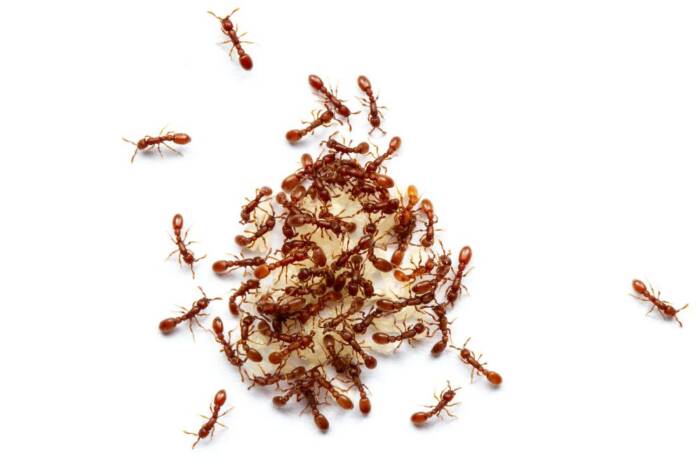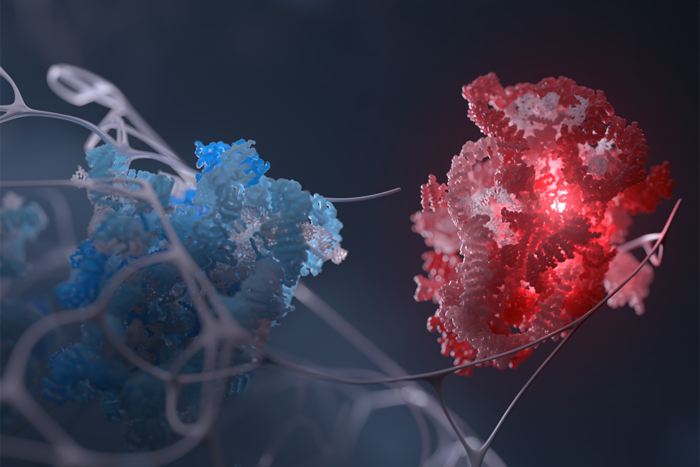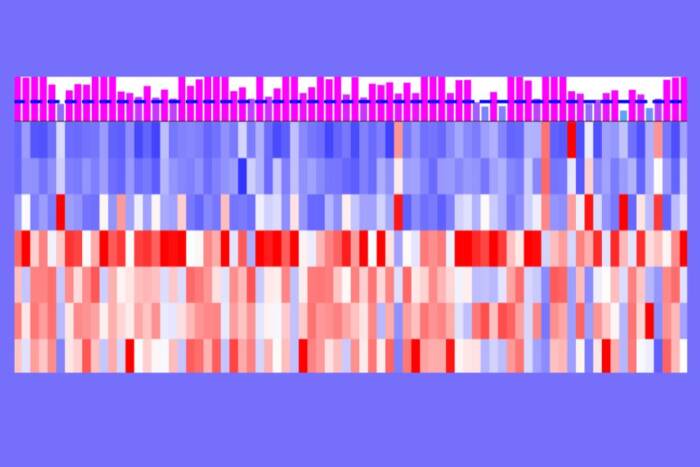Rockefeller Researchers Show Brain Wiring For Detecting Odors May Depend On Experience
Findings show for the first time that development of smell is similar to other senses

The Mombaerts lab recently provided evidence that development of the olfactory system in mice may depend on experience, much like David Hubel and President Emeritus Torsten Wiesel showed for development of the visual system. From left to right: Tom Bozza, Peter Mombaerts, Ivan Rodriguez, Chen Zheng and Paul Feinstein. Photo courtesy of the Mombaerts lab.
Scientists have known for 30 years that proper development of the area of the brain responsible for processing visual signals depends on stimulation from the environment. In other words, the brain must “use it or lose it.” Now researchers from The Rockefeller University have shown a similar paradigm in the development of the brain’s wiring for odor detection in mice.
The family of genes responsible for producing odorant receptors in mice is one of the largest in mammals–about 1,000 genes of the estimated 40,000 genes in all. These genes encode receptors that are expressed in neurons spread throughout the olfactory epithelium, the lining of the nose that detects odors. In normal development of the olfactory system in mice, neurons expressing a particular odorant receptor project their axons to a pair of structures in the olfactory bulb called glomeruli.
Reporting in the April 28 issue of the journal Neuron, a team of researchers led by senior author Peter Mombaerts, M.D., Ph.D., assistant professor and head of the Laboratory of Developmental Biology and Neurogenetics, studied mice genetically engineered with no sense of smell, or anosmic. The anosmic animals are missing a gene called OCNC1, which codes for an ion channel in the olfactory signal transduction pathway. As a result, the mice do not respond electrically to odorous chemicals.
In the mice, the researchers looked at neurons expressing an odorant receptor known as M72 and found that the neurons developed abnormally, projecting their axons to multiple, smaller glomeruli located at variable positions in the olfactory bulb. The researchers think electrical activity appears to be important to development of normal axonal projection in M72. Surprisingly, when they looked at the population of neurons expressing another receptor, P2, they found it developed normally. The researchers do not know why the P2 population develops normally. Mombaerts compares it to a bureaucracy because it develops regardless of the outcome.
In the 1960s, David Hubel, M.D., and Torsten Wiesel, M.D., president emeritus of The Rockefeller University, showed that if one eye is deprived of visual stimulation, the brain’s wiring for vision develops abnormally because competition arises between the neurons processing signals from the eyes.
“With the idea of competition, there are axons growing to a territory in the brain, where they make connections to other axons,” says Mombaerts. “And if there is competition between them, which we think happens normally during development, then they segregate neatly.”
 To determine if a similar mechanism is responsible for olfactory development, Chen Zheng, Ph.D., a postdoctoral fellow and lead scientist on the project, induced competition genetically.
To determine if a similar mechanism is responsible for olfactory development, Chen Zheng, Ph.D., a postdoctoral fellow and lead scientist on the project, induced competition genetically.
Setting up an intricate genetic design, the researchers bred so-called triple-mutant mice in which half of the M72-expressing neurons are active and labeled green. The other half are inactive and labeled red.
Mombaerts and his colleagues found that axons from both types of olfactory neurons segregate in different glomeruli–the red and the green ones don’t intermingle. Instead they project each to their own glomeruli.
“Our interpretation–one of several possible interpretations–is that forcing competition between the sensory neurons accentuates the effect of sensory experience,” says Mombaerts. “Hubel and Wiesel called their experimental design, in which one eye is deprived of light, the ‘monocular deprivation paradigm’ We call ours the ‘monoallelic’ deprivation paradigm. We deprive one allele of this activity, but not the other one.
“This is the first evidence to my knowledge for the role of activity in the formation of the olfactory sensory map.”
Mombaerts’ and Zheng’s co-authors Paul Feinstein, Ph.D., Thomas Bozza, Ph.D., and Ivan Rodriguez, Ph.D. This research was supported in part by grants from the National Institutes of Health (NIH) and the Human Frontier Science Program. Mombaerts was an Alfred P. Sloan, Basil O’Connor, Guggenheim, Irma T. Hirschl, Klingenstein, McKnight, Rita Allen and Searle Scholar of Fellow. Postdoctoral fellowship support to Zheng was from the Norman and Rosita Winston Foundation and the NIH, to Feinstein from Bristol-Myers Squibb and the NIH, to Rodriguez from the Swiss National Foundation and to Bozza from the NIH.


